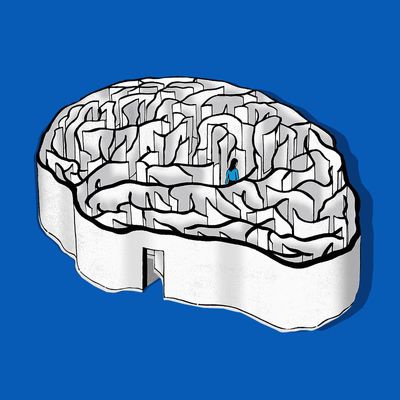
Brain imaging allows researchers and clinicians to look under the hood of mental disorders. Rather than inferring conditions through surface symptoms, the promise lies in finding patterns of brain activity that characterize depression, anxiety, and their peers — and, through the precision of such fancy technology, being able to recommend just the right therapy for the cranium in question.
With the publishing of a gigantic new study in Nature Medicine, that dream may have gotten a whole lot closer to reality. As reported on by Esther Landhuis at Scientific American, Cornell neuroscientist Conor Liston and his colleagues rounded up brain scans of over 1,000 people — about 40 percent of whom had depression diagnoses — from 17 research sites around the world. They measured 258 brain areas, tracked the connectivity between them, and fed all that into a machine learning program, the artificial intelligence technique where an algorithm teaches itself to engage with a data set, like in self-driving cars or ancient, inscrutable board games.
All that number-crunching yielded four different “biotypes” of depression. They were differentiated from each other (and the control group) at a neural level. Brains whose humans had more depressive anxiety had reduced connectivity in brain networks associated with fear and understanding negative emotional stimuli; people with anhedonia — or difficulty feeling pleasure — had hyperconnectivity in brain areas associated with reward processing and motor control.
The results also sliced fascinatingly across other conditions. The researchers found that while none of the 39 people in the analysis with generalized anxiety disorder met the clinical criteria for depression, a full 69.2 percent of them “were nevertheless classified” as belonging to one of these four depression biotypes — suggesting an overlap between conditions. The subtyping also bore the first fruits of greater diagnostic precision, as two of the subtypes were more likely to benefit from transcranial magnetic stimulation, a noninvasive procedure that pulses the brain’s emotion regulation centers.
While this study is an early beachhead for this kind of mental-condition brain imaging, it points to the promise of the technique: Guided by brain scans, clinicians can get a higher-resolution understanding of depression and its various flavors, and find the right treatments from there. “Biomarkers have already transformed the diagnosis and management of cancer, diabetes, heart disease and even pain syndromes,” Liston and his colleagues write in the discussion section of their paper. Biotypes could be the first steps to doing the same for psychiatry.




